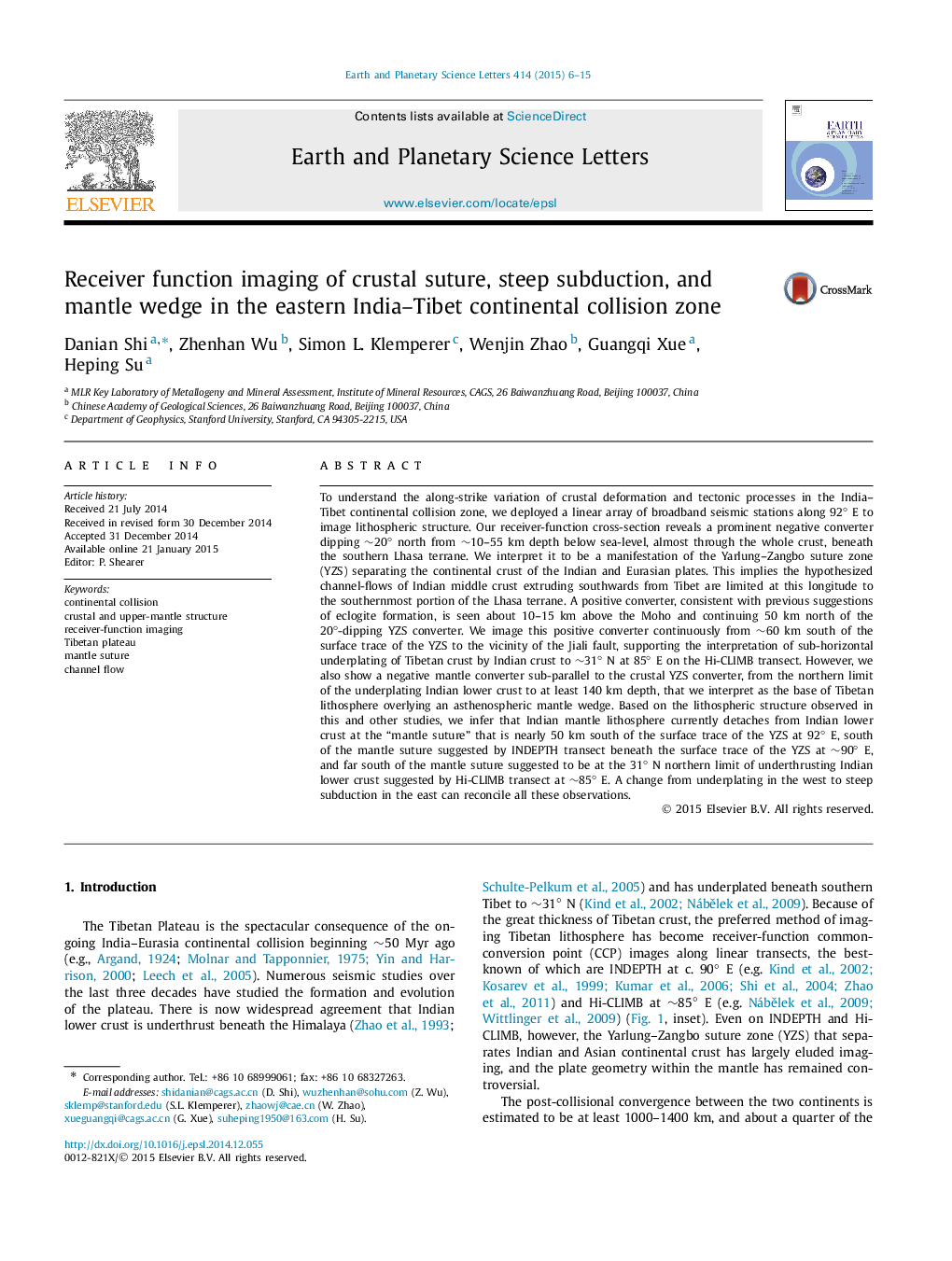| کد مقاله | کد نشریه | سال انتشار | مقاله انگلیسی | نسخه تمام متن |
|---|---|---|---|---|
| 6428563 | 1634742 | 2015 | 10 صفحه PDF | دانلود رایگان |

- CCP receiver-function cross-section of Tibet at 92° E images collisional architecture.
- A north-dipping crustal converter is imaged and interpreted as Yarlung Zangbo suture.
- A southward-shallowing narrow LVZ is imaged and associated with the MHT.
- Eclogitized Indian lower crust is traced from â¼60 km south of the suture to â¼31° N.
- Indian lithospheric mantle detached from crust â¼60 km south of the suture zone.
To understand the along-strike variation of crustal deformation and tectonic processes in the India-Tibet continental collision zone, we deployed a linear array of broadband seismic stations along 92° E to image lithospheric structure. Our receiver-function cross-section reveals a prominent negative converter dipping â¼20° north from â¼10-55 km depth below sea-level, almost through the whole crust, beneath the southern Lhasa terrane. We interpret it to be a manifestation of the Yarlung-Zangbo suture zone (YZS) separating the continental crust of the Indian and Eurasian plates. This implies the hypothesized channel-flows of Indian middle crust extruding southwards from Tibet are limited at this longitude to the southernmost portion of the Lhasa terrane. A positive converter, consistent with previous suggestions of eclogite formation, is seen about 10-15 km above the Moho and continuing 50 km north of the 20°-dipping YZS converter. We image this positive converter continuously from â¼60 km south of the surface trace of the YZS to the vicinity of the Jiali fault, supporting the interpretation of sub-horizontal underplating of Tibetan crust by Indian crust to â¼31° N at 85° E on the Hi-CLIMB transect. However, we also show a negative mantle converter sub-parallel to the crustal YZS converter, from the northern limit of the underplating Indian lower crust to at least 140 km depth, that we interpret as the base of Tibetan lithosphere overlying an asthenospheric mantle wedge. Based on the lithospheric structure observed in this and other studies, we infer that Indian mantle lithosphere currently detaches from Indian lower crust at the “mantle suture” that is nearly 50 km south of the surface trace of the YZS at 92° E, south of the mantle suture suggested by INDEPTH transect beneath the surface trace of the YZS at â¼90° E, and far south of the mantle suture suggested to be at the 31° N northern limit of underthrusting Indian lower crust suggested by Hi-CLIMB transect at â¼85° E. A change from underplating in the west to steep subduction in the east can reconcile all these observations.
130
Journal: Earth and Planetary Science Letters - Volume 414, 15 March 2015, Pages 6-15